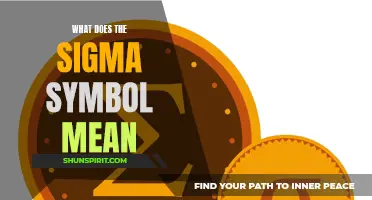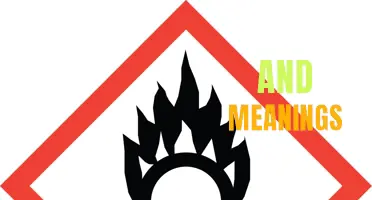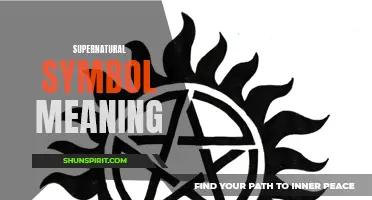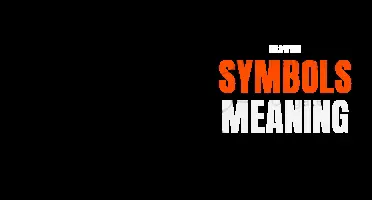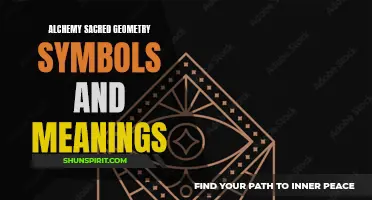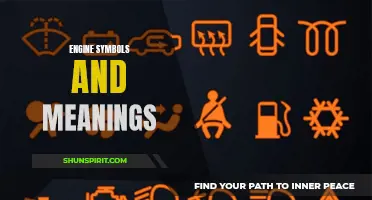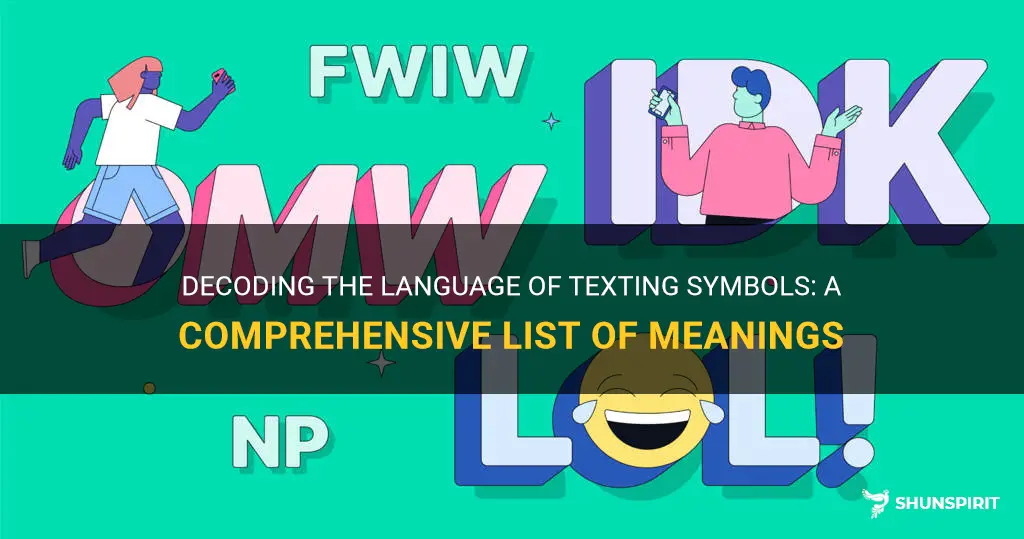
In today's fast-paced digital world, texting has become a primary mode of communication. But sometimes, deciphering what someone is trying to say through a simple text message can be confusing. That's where texting symbols come in – these shorthand representations can add a whole new layer of meaning to your conversations. From smiley faces to acronyms, this texting symbols list and meanings will decode the hidden language of texting and help you better understand what your friends and loved ones are really trying to say. So get ready to unlock the mysteries of modern communication and dive into the world of texting symbols!
What You'll Learn
- What are some common texting symbols and their meanings?
- Are there any shorthand symbols commonly used in texting that have multiple meanings?
- How can I learn and remember the meanings of different texting symbols?
- Are there any symbols that are specific to certain social media platforms or messaging apps?
- Can you provide a comprehensive list of texting symbols and their corresponding meanings?

What are some common texting symbols and their meanings?
In today's digital age, texting has become a ubiquitous form of communication. With the rise of smartphones and social media, people often use abbreviations and symbols to convey their thoughts and emotions quickly and concisely. As a result, there are many common texting symbols and their meanings that you should know. Whether you're curious about what certain symbols mean or you want to expand your texting vocabulary, this article will cover some of the most popular texting symbols and their corresponding meanings.
- :) or :-) - This symbol represents a smiley face and is used to convey happiness or friendliness. It is a positive and lighthearted expression.
- :( or :-( - Conversely, this symbol represents a sad or disappointed face. It is often used to convey negative emotions such as sadness, disappointment, or frustration.
- :D or :-D - Similar to the smiley face, this symbol represents a big grin or laughter. It is often used to express extreme happiness or excitement.
- :P or :-P - This symbol represents a playful or teasing face sticking out its tongue. It is often used to convey sarcasm, jest, or a friendly joke.
- <3 - This symbol represents a heart and is used to express love, affection, or friendship. It is commonly used to convey romantic feelings or deep emotional connections.
- LOL - This abbreviation stands for "laugh out loud" and is used to indicate laughter or amusement. It is often used in response to something funny or humorous.
- BRB - This abbreviation stands for "be right back" and is used to indicate a temporary absence. It is often used when someone needs to step away from the conversation momentarily.
- OMG - This abbreviation stands for "oh my god" and is used to convey surprise or shock. It is often used to emphasize astonishment or disbelief.
- TTYL - This abbreviation stands for "talk to you later" and is used to indicate the end of a conversation. It is often used when someone wants to say goodbye or sign off temporarily.
- IDK - This abbreviation stands for "I don't know" and is used to indicate a lack of information or uncertainty. It is often used when someone is unsure of an answer or cannot provide a definite response.
- 2nite - This abbreviation stands for "tonight" and is used to indicate the current evening. It is often used to make plans or indicate availability for an event or gathering.
- WTF - This abbreviation stands for "what the f***" and is used to convey extreme shock, disbelief, or frustration. It is often used in response to something outrageous or unacceptable.
These are just a few examples of the many texting symbols and their meanings. Language is constantly evolving, and new symbols and abbreviations continue to emerge. It's important to keep in mind that not everyone may be familiar with all of these symbols, so context is key in understanding their meanings. So the next time you're texting with friends or family, keep these symbols in mind to better understand the tone and emotions being conveyed.
Demystifying Punctuation Symbols: Understanding Their Meanings
You may want to see also

Are there any shorthand symbols commonly used in texting that have multiple meanings?
In today's digital age, texting has become a popular mode of communication. It allows people to quickly send messages to one another in a convenient and efficient manner. However, with the rise of texting, there has also been an emergence of shorthand symbols that are commonly used in texting. These symbols, often called emojis, allow individuals to convey their feelings and emotions in a concise and easily understandable manner. While emojis have undoubtedly enhanced our ability to communicate, there are some symbols that have multiple meanings, leading to potential misunderstandings.
One such symbol is the "smiling face" emoji 😊. This emoji is typically used to convey happiness or friendliness. However, its meaning can vary depending on the context in which it is used. For example, if someone sends the smiling face emoji after delivering a sarcastic or snarky comment, it can be interpreted as insincere or sarcastic. Similarly, if the emoji is used in a passive-aggressive manner, it can also be perceived negatively. Thus, the smiling face emoji can be seen as having multiple meanings, depending on the intent behind its use.
Another commonly used shorthand symbol is the "thinking face" emoji 🤔. This emoji is often used to convey a sense of contemplation or confusion. However, it can also be used to indicate suspicion or doubt. For example, if someone receives a message and responds with the thinking face emoji, it can imply that they are skeptical or questioning the validity of the information received. This again highlights how a single symbol can have multiple interpretations depending on the context.
The "thumbs-up" emoji 👍 is another shorthand symbol that has multiple meanings. Traditionally, the thumbs-up gesture is used to signify approval or agreement. However, in the digital realm, its meaning has evolved. While it still generally signifies affirmation, it can also be used in a more sarcastic or passive-aggressive manner. For instance, if someone receives a message that they disagree with or find uninteresting, responding with a thumbs-up emoji can be perceived as dismissive or insincere.
These examples serve to illustrate how even simple shorthand symbols can have multiple meanings depending on the context in which they are used. It is important to keep this in mind when engaging in texting conversations to avoid misunderstandings. To ensure effective communication, it is often best to provide additional context or use clear and explicit language to avoid any potential misinterpretations. Using shorthand symbols like emojis can add a layer of complexity to text-based conversations, but with awareness and understanding, they can be powerful tools for expression and communication.
Exploring the Mystical Symbols and Hidden Meanings behind Grateful Dead's Iconic Imagery
You may want to see also

How can I learn and remember the meanings of different texting symbols?
Texting symbols have become a common form of communication in today's digital age. Whether it's through text messages, social media platforms, or online chats, these symbols are used to convey emotions, actions, or ideas in a concise and efficient manner. However, understanding and remembering the meanings of these symbols can sometimes be a challenge, especially for those who are new to the world of texting.
To help you navigate the world of texting symbols, here are some useful tips to learn and remember their meanings:
- Research and familiarize yourself with common symbols: Begin by researching and familiarizing yourself with the most commonly used symbols in texting. There are numerous online resources that provide comprehensive lists of texting symbols and their meanings. Take some time to explore these resources and make notes of the symbols that you come across frequently.
- Context is key: To understand the meaning of a texting symbol, it is essential to consider the context in which it is used. Texting symbols can have multiple interpretations depending on the conversation and the people involved. Pay attention to the conversation's overall tone and the message being conveyed to help you determine the symbol's intended meaning.
- Use mnemonic devices: Mnemonic devices are memory aids that can help you remember information easily. Create your own mnemonic devices to remember the meanings of specific texting symbols. For example, if you want to remember that the symbol ":)" represents a happy face, you could create a phrase such as "Smile with a colon."
- Practice with friends: Engage in conversations with friends who are familiar with texting symbols. Ask them to send messages that include various symbols and try to decipher their meanings. This hands-on practice will help you become more comfortable with recognizing and understanding different symbols.
- Take advantage of technology: There are several smartphone apps and websites available that decode texting symbols. These resources can be particularly useful for beginners who are still learning the meanings of various symbols. Install an app or visit a website that offers symbol translation and use it as a reference whenever you come across a symbol you don't understand.
- Create a personal cheat sheet: As you encounter new symbols, create a personal cheat sheet that lists the symbol and its corresponding meaning. Keep this cheat sheet handy on your phone or in a notebook for quick reference. Regularly reviewing this cheat sheet will help reinforce your knowledge and improve your familiarity with texting symbols over time.
- Embrace open communication: Don't be afraid to ask for clarification if you come across a symbol you don't understand. Most people will be more than willing to explain the intended meaning of a symbol, especially if they understand that you are new to texting or unfamiliar with a particular symbol.
Learning and remembering the meanings of texting symbols requires patience and practice. By following these tips and consistently exposing yourself to texting symbols in real-world conversations, you will gradually become more fluent in understanding and using these symbols. Remember, like any form of communication, the meanings of symbols can also evolve over time, so staying current with texting trends is essential. Embrace the learning process and have fun as you navigate the exciting world of texting symbols!
What Does the Car Symbol with an Arrow Mean and How to Interpret It
You may want to see also

Are there any symbols that are specific to certain social media platforms or messaging apps?
Symbols play a significant role in communication on social media platforms and messaging apps. They can convey emotions, indicate actions, and represent various elements or concepts. While most symbols are universal and can be used across different platforms, there are some symbols that have become closely associated with specific social media platforms or messaging apps.
One commonly recognized symbol specific to Twitter is the hashtag symbol (#). Invented by Twitter users to categorize and organize content, the hashtag has now become a ubiquitous symbol in social media. It allows users to search for and follow specific topics or trends easily. The hashtag symbol has since been adopted by other platforms, but it remains closely tied to Twitter's identity.
On the other hand, the @ symbol is widely associated with Twitter as well as Instagram. It is primarily used to tag or mention other users in a post or comment, enabling them to receive a notification about the mention. While the @ symbol originated on Twitter, it has become a central feature of Instagram's community and communication as well.
Emojis have revolutionized the way people express themselves online and across messaging apps. While emojis are generally universal, there are a few that have become closely linked to specific platforms. The Facebook 'thumbs up' emoji, for example, has become synonymous with the platform's iconic like button. Similarly, Snapchat has its own set of unique emojis that represent different aspects of user interactions, such as the flame symbol for streaks or the yellow heart for best friends.
Another platform-specific symbol is the green dot on Facebook Messenger, indicating that a user is currently active and available for chat. This symbol helps users gauge the availability of their friends or contacts, allowing for more immediate and real-time communication.
In messaging apps like WhatsApp and Messenger, double checkmarks next to a sent message indicate that the recipient has received and read the message. This simple symbol helps users know the status of their messages, allowing them to follow up or confirm that their message has been received.
While these symbols may have originated on specific platforms, they have had such a substantial impact on online communication that they have been adopted, in various forms, by other social media platforms and messaging apps. Their widespread use and recognition are a testament to the power symbols hold in shaping digital communication.
The Hidden Meaning Behind the Black Widow Symbol: Unveiling the Intriguing Metaphors
You may want to see also

Can you provide a comprehensive list of texting symbols and their corresponding meanings?
Texting has become a popular form of communication in the digital age, with many people using various symbols and abbreviations to express themselves quickly and concisely. These symbols, known as texting symbols, have taken on various meanings and can convey different emotions and messages. Here is a comprehensive list of texting symbols and their corresponding meanings:
- :) - A smiley face indicating happiness or a friendly tone.
- :( - A frowning face representing sadness or disappointment.
- :D - A big grin or laughter.
- ;) - A wink to signal a joke or teasing.
- :P - Sticking out the tongue, often used in a playful or sarcastic manner.
- :O - An expression of surprise or shock.
- <3 - A heart symbol representing love or affection.
- XD - Represents laughter or extreme happiness.
- :/ - A skeptical or unsure expression.
- :') - Crying tears of joy or happiness.
- B-) - A cool or confident expression, often used sarcastically.
- :-* - A kiss or blowing a kiss.
- <3<3<3 - A big heart or lots of love.
- O.o - Confusion or disbelief.
- -_- - Represents boredom or unamusement.
- -.- - Expresses annoyance or frustration.
- >.< - Represents anger or irritation.
- ^_^ - A happy or excited face.
- ;( - Crying or sadness.
- -.-' - Expresses exasperation or resignation.
These are just a few examples of the many texting symbols and their meanings. It's important to note that context and personal interpretation can play a role in understanding the intended message. Additionally, new symbols and meanings may emerge as technology and communication methods evolve. Always consider the context and tone of the conversation to accurately interpret the intended message.
In conclusion, texting symbols are a popular way to express emotions and convey messages in a concise manner. They can add personality and nuance to digital communication. Understanding these symbols and their meanings can help enhance your texting experience and ensure effective communication with others.
The Intriguing Symbolism of Anubis: Unveiling its Meaning and Significance
You may want to see also
Frequently asked questions
Texting symbols, also known as emojis or emoticons, are small pictorial icons that are used in text messages and social media to express emotions or ideas. They are typically made up of a combination of punctuation marks and other characters.
Texting symbols can be inserted into a text message or social media post by simply typing them out using your keyboard. For example, if you want to use a smiley face symbol, you can type ":" followed by ")" to create the symbol ":)".
While some texting symbols have universal meanings, such as a smiley face representing happiness, others can have different interpretations depending on the context and the cultural background of the user. For example, a thumbs up symbol may be used to indicate approval in one culture, but considered rude in another.
Yes, you can create your own texting symbols by combining different punctuation marks and characters. There are no set rules for creating symbols, so you have the freedom to get creative and come up with your own unique symbols.
There are many websites and apps available that provide lists of texting symbols and their meanings. Some popular options include Emojipedia, Unicode's official emoji list, and various emoji cheat sheets that are available online. Additionally, you can also find texting symbol meanings by searching for specific symbols or icons on search engines like Google.


